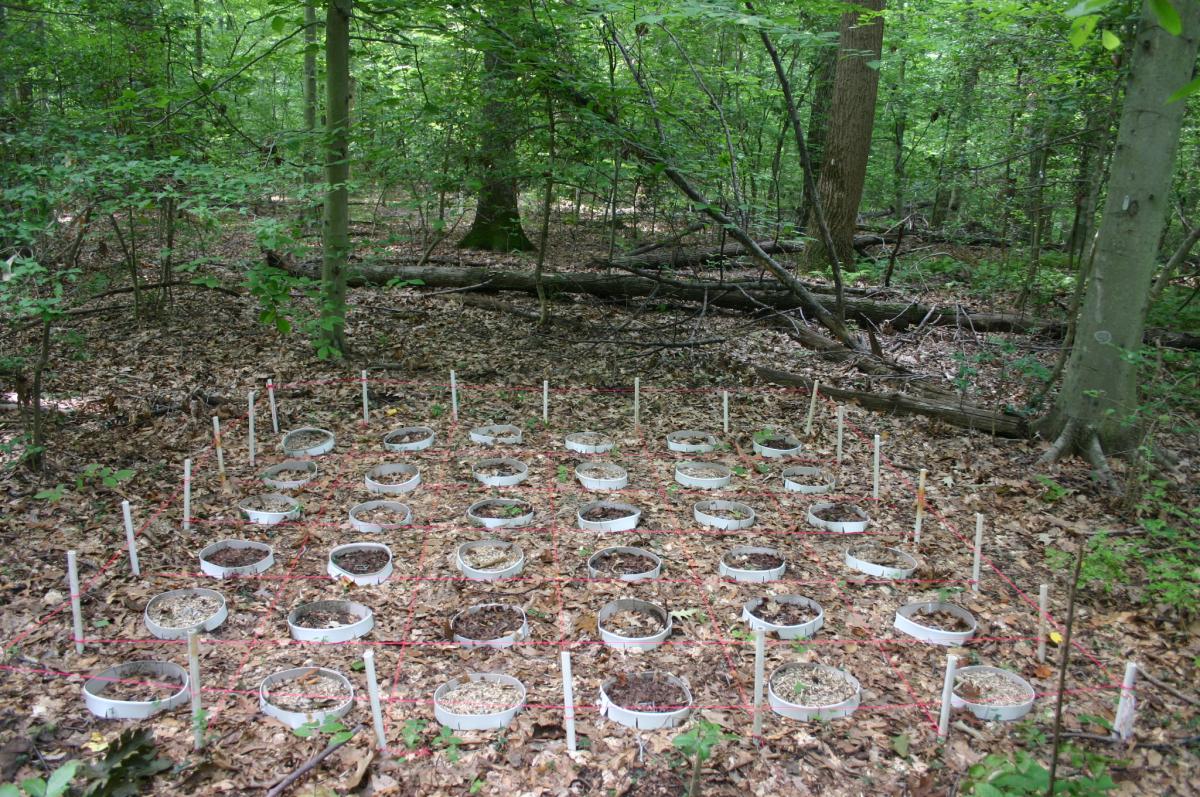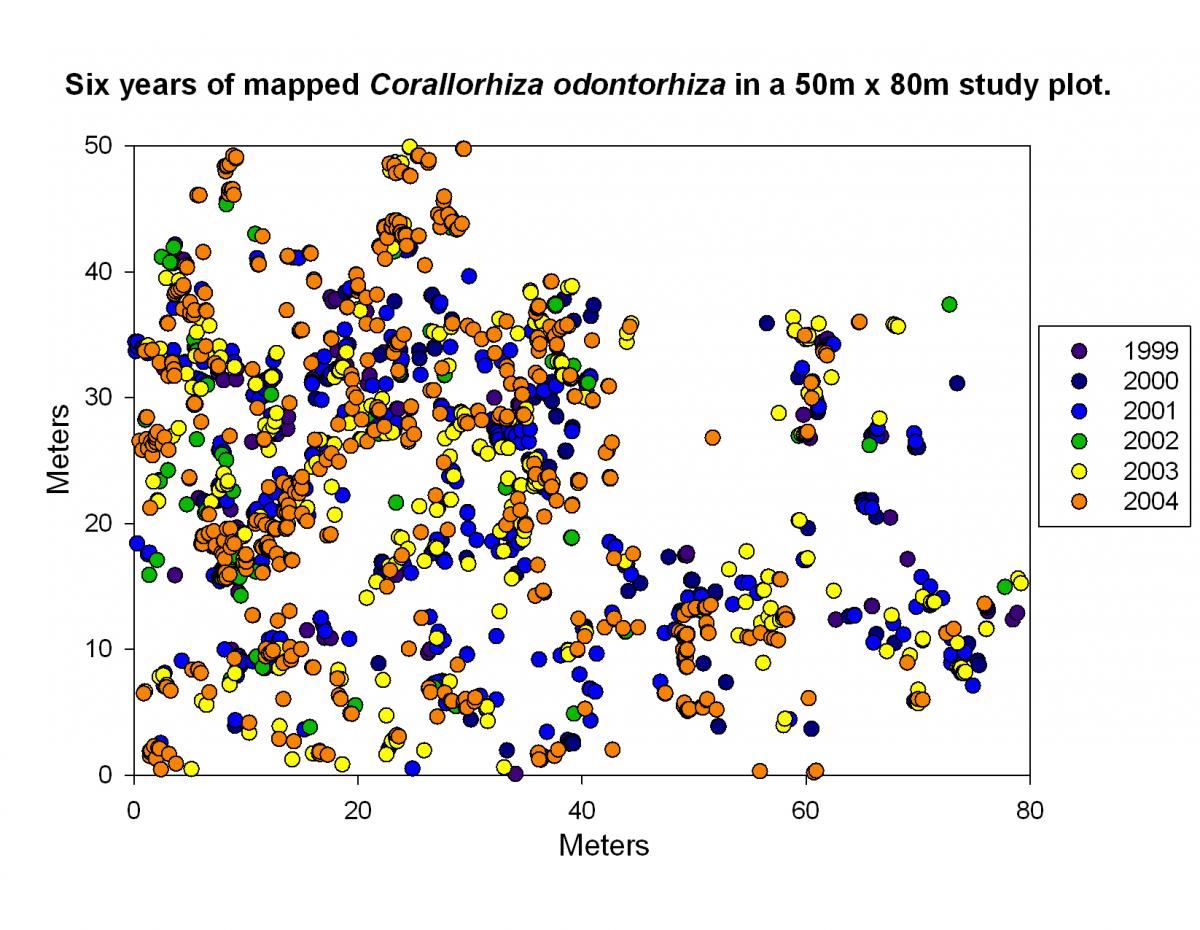Research ProjectMycorrhizal Fungi Affect Orchid Dynamics
Mycorrhizal Fungi Affect Orchid Dynamics
Affiliated Labs
Project Goal
All orchids rely in mycorrhizal fungi to provide them with nutrients, but how these fungi affect orchid populations is unclear. The goal of this project is to understand how the distribution and abundance of orchid mycorrhizal fungi affects orchid population dynamics.
Description

Orchids rely entirely on their mycorrhizal fungi for all nutrients as well as carbon early in life and this reliance continues to varying degrees later in life. In an NSF-funded collaboration between SERC, D. Lee Taylor (University of New Mexico), and Timothy Filley (Purdue University), we separated the effects of forest history, carbon source (wood or leaves), and availability of appropriate mycorrhizal fungi on orchid distribution. We found that the effects of carbon source and forest history primarily affected the germination of three orchid species through effects on the presence and abundance of appropriate mycorrhizal fungi. One orchid used fungi that were very uncommon, but could grow in a range of conditions. The other two used fungi that were more widespread, but needed the right conditions to flourish so they could support orchids. Having this information for all orchids will be important for developing methods for conservation and restoration, as well as growing native orchids horticulturally. This work was published in New Phytologist and Molecular Ecology and was the subject of articles in Scientific American and Science.

In another orchid project, we combined long-term population measurements and population mapping of the mycoheterotrophic orchid Corallorhiza odontorhiza (an orchid that never produces green leaves and relies entirely on its fungi for all nutrients, including carbon) with measurements of the abundance of appropriate mycorrhizal fungi in the soil and on tree root tips to separate the effects of climate and biotic factors on orchid distribution. This work was published in Ecological Monographs. We continued research on this population in collaboration with Richard Shefferson (University of Tokyo) to examine the effects of environmental variation on flowering and dormancy in this mycoheterotrophic plant. We found that larger plants (those with better nutrient access or associated with better fungi) were more likely to flower and continue to flower in the future. We also found that over 75% of the orchids in this population did not produce any above-ground shoot in any particular year, meaning that if estimates of population size are based on a single year of observations they will dramatically underestimate the number plants in populations of this orchid. This work was published in Oikos.

